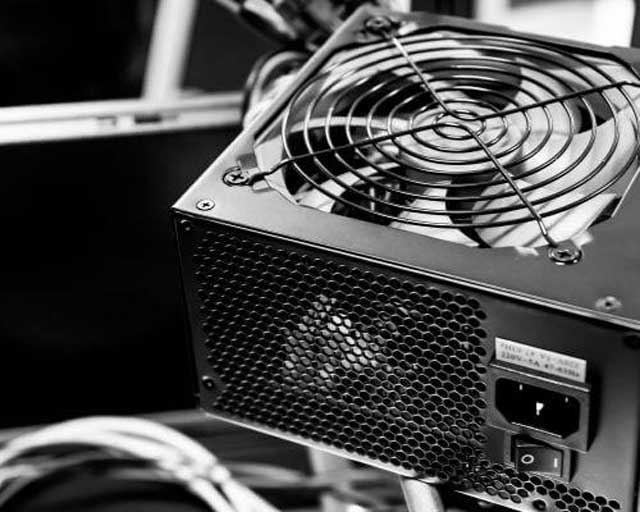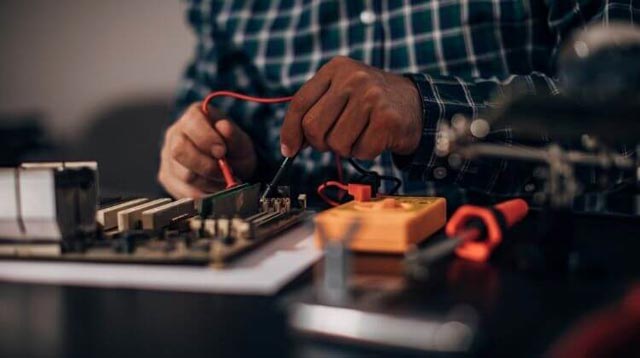If you are a PC user and discover a red light blinking out of the motherboard but do not know what it is indicating, then you are not alone. Mostly, people question what does the red light on the motherboard confide? In this post, we will try to clear your thoughts. If you are interested in digging out the answer, proceed with the reading.
Red Light On The Motherboard Meaning
A red light on your motherboard usually indicates a problem with one of the hardware components. This could be anything from a faulty CPU to a damaged memory module. If you see a red light on your motherboard, it’s important to troubleshoot the problem as soon as possible.
If you’re not sure what the cause of the problem is, you can try checking the BIOS for error codes. If that doesn’t help, you may need to contact a qualified technician for assistance.
Red Light On Motherboard Near Ram Meaning
If you’re seeing a red light on your motherboard near the RAM, it’s likely that there’s an issue with the memory modules themselves. Try removing and re-seating the modules to see if that solves the problem. If not, you may need to replace the modules.
CPU light on motherboard Meaning
Cpu light on motherboard is an indicator used to show the status of the computer’s CPU. The color of the light can vary, but usually, it is either red or green. If it is red, then it indicates that there is a problem with the CPU. If it is green, then it means that the CPU is functioning properly.
Cpu light on motherboard can be found on the front panel of the computer case or on the motherboard itself. It is often located near the power button. If you cannot find it, consult your computer’s manual for its location.
VGA Red Light On Motherboard Meaning And How To Fix
The vga red light on motherboard indicates that the video graphics array (VGA) port has no active input signal. This is often due to the monitor being turned off, the cable being unplugged, or the computer’s power saving mode activating. If you see this light, check to make sure your monitor is plugged in and turned on. You may also need to adjust your computer’s power settings.
If you’re troubleshooting your computer and notice a red light on your motherboard’s VGA port, don’t panic! This is usually an indication that there’s an issue with the graphics card or display.
There are a few things you can try to troubleshoot the issue:
– First, check that the graphics card is properly seated in the slot and connected to the power supply. If it’s loose, tighten the screws or replace the card.
– Next, try connecting another monitor to the VGA port to see if there’s a problem with the display. If the other monitor works fine, then you know it’s not a hardware issue.
– If you’re still having trouble, try updating your graphics card drivers. Outdated drivers can sometimes cause problems.
– If you’ve tried all of these things and the red light is still on, then there may be a problem with the motherboard itself. In this case, you’ll need to contact a computer technician for further diagnosis and repairs.
What Are The Reasons Behind The Red Light On The Motherboard?
If you are getting a red light on your motherboard, check that the power supply is working. If it is, then you might have a motherboard problem. The first thing to do is check the RAM (memory) modules. Remove one of them and see if the computer boots up. Try booting with only one module installed if that is the case.
Additionally, try to boot your system with both modules installed until you determine the problem. If they work individually but not together, it could be an issue with the motherboard or PSU. If nothing works when you insert the RAM modules into your computer, the problem may be the RAM slots or the memory controller chip.
Check for bent pins on any RAM module that does not work in your computer before trying to replace them. Sometimes it can happen due to improper installation or physical damage to these components due to overheating or electrostatic discharge (ESD).
No Display On Monitor
If there is no display at all on your monitor, regardless of what operating system you are using, then it could be that one of these parts is malfunctioning:
CPU Failure
The most likely cause. Ensure no loose connections inside the case, and check if the processor fan is working correctly. Check for broken traces on the motherboard and a multimeter to measure the continuity between each pair of pins on the video card connector. If you get no reading, one or more traces on your video card may have been damaged.
RAM
RAM might be incompatible with your motherboard, or some sticks may be faulty.
Try replacing them with new ones in pairs until you find which ones are causing problems.
If you have four sticks of RAM but only three fit in the slots, try removing one stick of RAM and see if everything works again. I
f you have two RAM sticks, but only one does in the space, replace it with another stick until they both fit.
Power Supply Unit (PSU)

It is a common problem for PCs, especially older ones. The PSU is responsible for powering up all the components in your computer, and if it fails, everything else stops working. It is normal to burn out after some time of use, and you can test it by plugging another working power supply into your PC and see if it works now. Then replace it with another one from a different machine or get a new one.
Video Card
If your computer has more than one video card installed (multiple graphics cards), ensure they are all appropriately connected and seated properly in their slots. If one of them is faulty, it may not be detected by Windows or Linux and will not work correctly even if you try to install drivers.
How to Fix The No Display On The Monitor?
There are a few things that you can try on the suggestion of demotherboards:
- Remove the video card and see if it boots up without it. If it does, then there is something wrong with your video card. You may want to check if all of the connections are secure and try another video card to see if that works.
- If your computer is still not booting up, it may be a faulty motherboard or processor (CPU).
- You can test this by removing both components and connecting them using just their power cables, without any RAM or drives attached.
- If nothing above works, there could be other problems with your computer, such as insufficient power supply or bad memory modules (RAM).
- Try testing these components individually by removing them from your system one at a time to see if that solves the problem.
How To Fix Red Light On Motherboard
If you have a red light on your motherboard, it is most likely due to a faulty component. In order to fix this, you will need to replace the component. Follow these steps to do so:
1. Power down your computer and unplug all cables.
2. Open up your case and locate the faulty component.
3. Remove the old component and replace it with a new one.
4. Close up your case and reconnect all cables.
5. Power on your computer and test to see if the red light is gone. If not, repeat these steps until the problem is resolved.
If you are having difficulty locating the faulty component, you can consult your motherboard’s manual or contact the manufacturer for further assistance.
Conclusion
If you are experiencing the Red Light of Death on your motherboard, there is hope.
There are a few things that you can do to try and fix the issue before taking your computer in for repair.
We have outlined some of these solutions in this blog post: Red Light On Motherboard Means And How To Fix It, so be sure to give them a try before calling in the professionals.
Have you been able to successfully fix your motherboard using these tips?
Let us know in the comments below!





